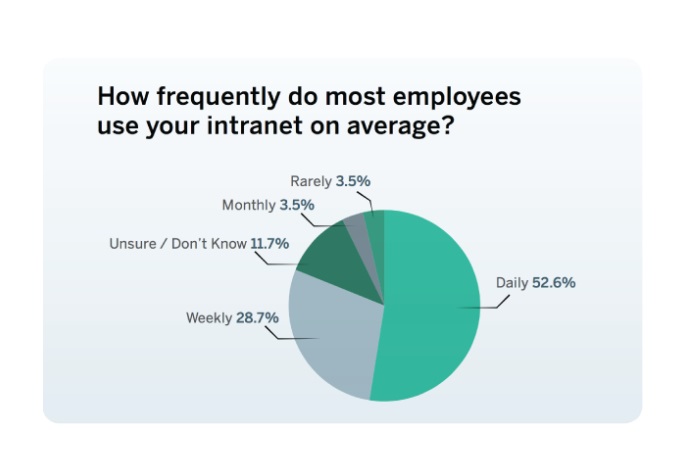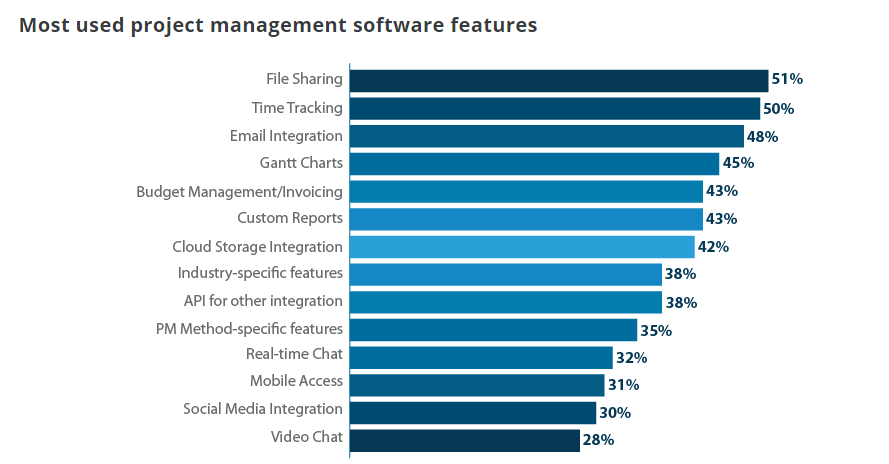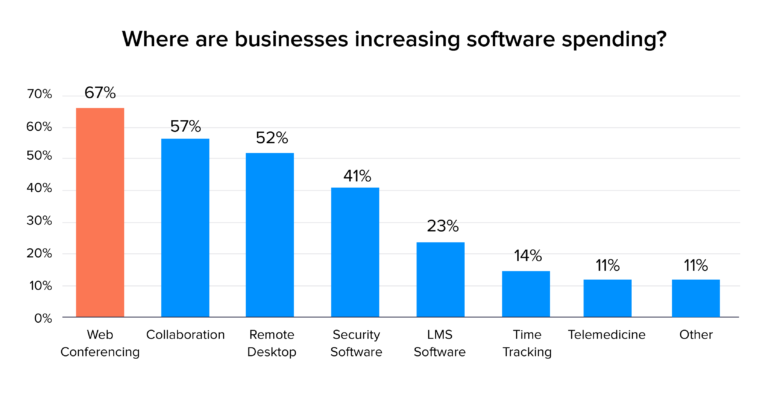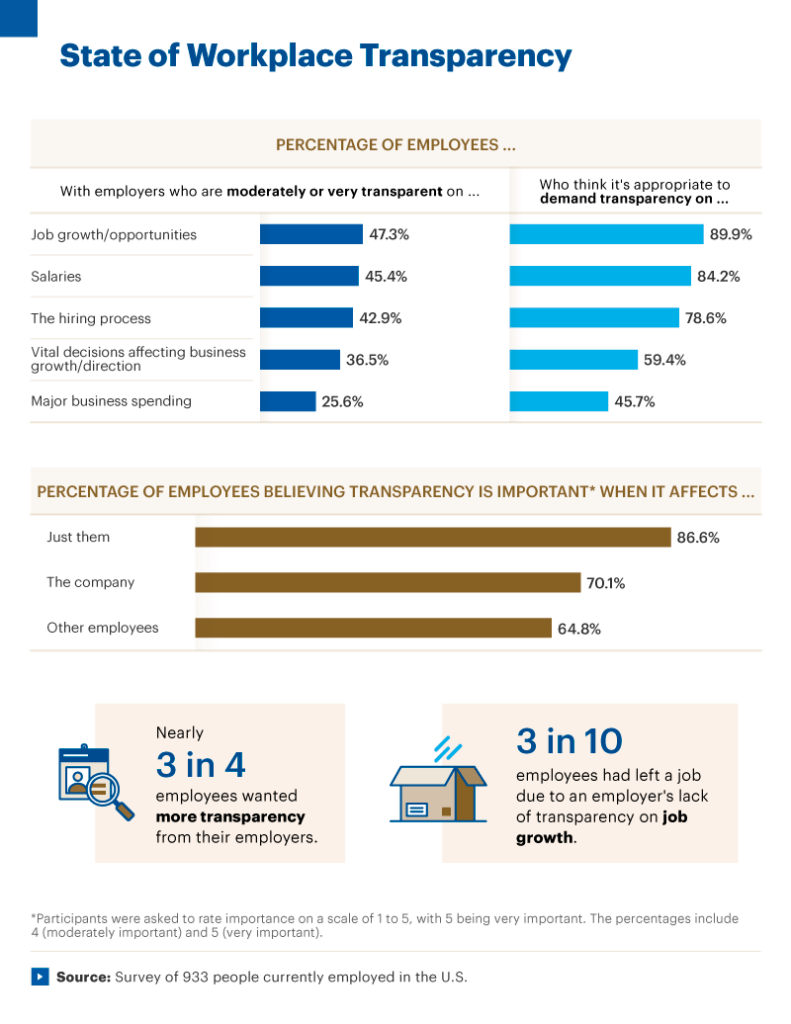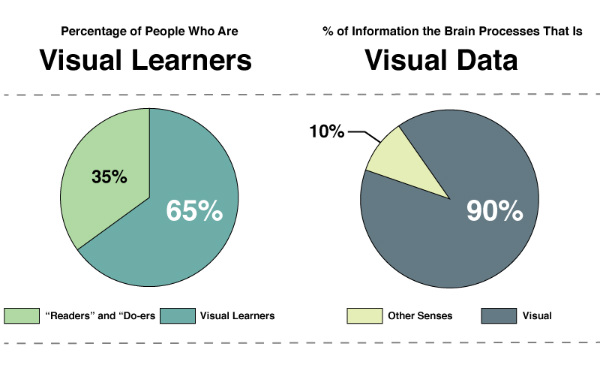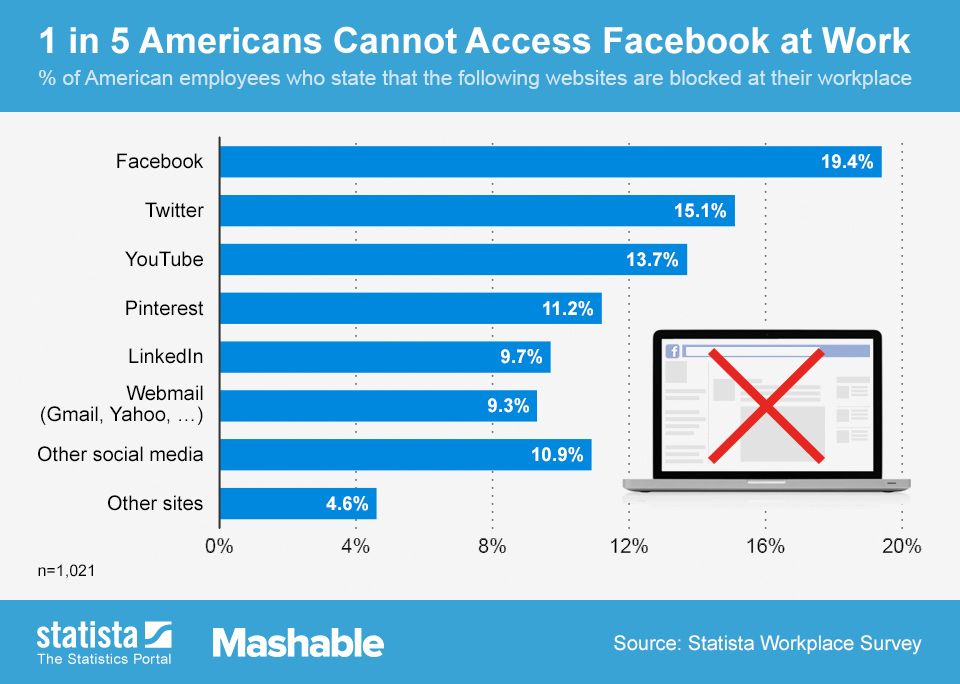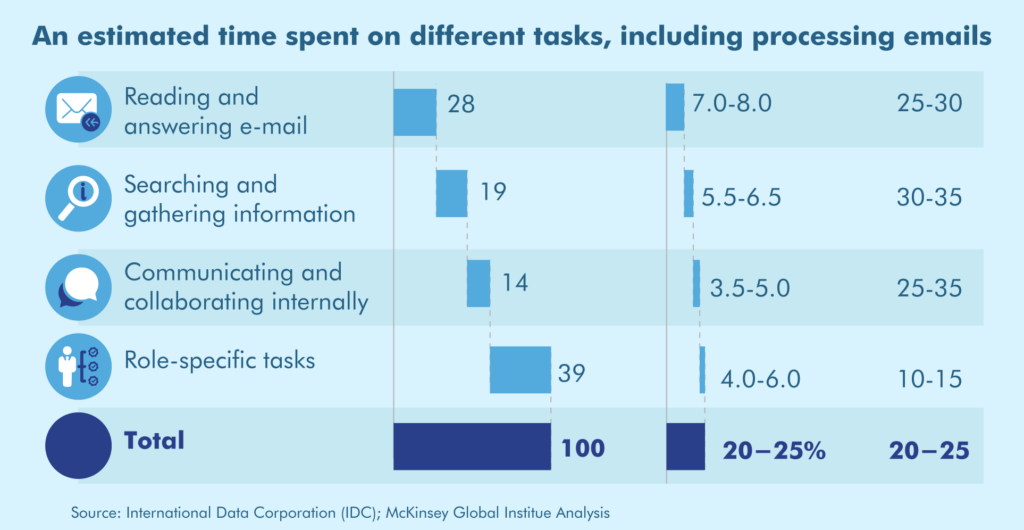Business communication has changed dramatically in recent years. Whether it’s customers communicating with retailers, or employees communicating with each other, there has been a dramatic shift towards long-distance communication over the internet.
Luckily, this shift in trends has also given rise to many new tools designed to make communication quicker and easier. A large number of these tools are being utilised in the workplace, and with good reason. Let’s take a look at communication tools, why they’re important, and how to get the best out of them for your business.
What Is a Communication Tool?
In the modern sense, communication tools are digital tools that enable teams to stay in touch, in real-time, wherever they may be. They facilitate better business communication, team collaboration, and productivity. Because there are so many different ways to communicate in the workplace, there are many different tools available to suit all communication needs.
These could take the form of communication software, document collaboration tools like Google Docs, file sharing platforms such as Dropbox, and many more besides. Anything that helps provide better employee communication is a communication tool for business.
The Importance of Communication Tools
There are many reasons communication tools are important for owners running a small business and large businesses alike. One of the biggest benefits they bring to both kinds of enterprises is time-saving. Instant messaging apps can make communication between employees so much more efficient than, for example, sending and replying to emails, or making phone calls.
There’s no longer a need to try and schedule team meetings for when everybody is in the office. With video conferencing, you can hold online meetings whenever it is necessary, regardless of where your employees are in the world.
Similarly, project management can be simplified and streamlined, ultimately improving workflow. There’s no need to gather all of the team together for a project update meeting. Simply use project management tools to monitor projects and prioritise tasks, ensuring employees are working to schedule, and focusing on the right areas.
The best communication tools not only make it easier to organise work projects, but they also help your teams to feel connected and stimulate better teamwork. With more and more employees embracing remote working, it can be easy for them to feel isolated when no longer in a traditional office workspace.
20% of workers report loneliness as their biggest struggle with working remotely, with a further 20% stating trouble with collaboration and communication. Communication tools can help with both of these problems.
They can help to recreate the office environment by facilitating quick and easy communication, helping them to still feel like part of a team, working from anywhere.
Types of Communication Tools Used in Business
There are a vast number of different communication tools that can be used to stay in touch in the world of business. Some are better suited to certain environments than others, but all have their advantages. Let’s take a look at some of the most common business communication tools in use today.
1. Intranet/Social Intranet
An intranet is a closed network that can be accessed by authorised users with an organisation. It provides a private hub that gives employees communication tools, collaboration features, and access to resources.
Resources and company information can be easily shared, then accessed by anyone with access to the intranet, from any device, anywhere in the world. They’re especially useful for organisations that adopt telecommuting and bring-your-own-device policies.
Information does not just flow in one direction through an intranet. Employees can communicate with each other, offering updates and sharing information, while also being able to interact with content. Forums can provide a space to discuss issues with projects, and offer help and advice to other colleagues.
As shown by the graph above, intranets are often frequently used in the workplace, with over half of users reporting using them daily, and only 3.5% saying they use them less than monthly.
2. Group/Business Messaging
Instant messaging tools are a great way to keep in touch in social spaces, and the same is true for businesses spaces, too. They provide a quick and easy way to hold discussions or provide updates on projects.
One of the biggest benefits of a group chat platform is that information is retained in the event it needs to be referred back to later. Slack, for example, provides an easy way to do this by letting you set up different channels. Channels can be categorised by team, project, or any other criteria you wish to use.
When a team member joins a channel, they’ll be able to see the conversation history for it. This gives them access to any discussions that have occurred, updates that have been made, and files that have been shared. They can then quickly get up to date before jumping in on the work.
3. Project Management
Project management tools help your teams stay on top of workloads and stick to deadlines, even if they’re spread across the globe. They can be used to plan projects before they begin, and then organise and manage them while they are in progress.
Popular features of project management software include file sharing capability and time tracking functionality, with over half of users making use of these features.
Platforms such as Asana provide a visual way to track the progress of projects, allowing team members and managers to track when individual tasks have been completed. The state of the full project can also be seen, giving everyone the ability to see how much progress is being made.
Task management tools can be used to assign tasks to different team members, so everybody knows exactly what they need to be working on, and who to turn to when tasks overlap. One platform which uses this to great effect is Trello, which uses cards to create a Kanban board-style interface, where various tasks can be seen all together, including who is responsible for completing them and when they’re due.
4. Ticketing, Issue Tracking, and Case Software
These platforms see prominent use in customer service scenarios. They provide an online helpdesk where customers, or employees, can raise support tickets, which can then be kept track of to monitor progress. Platforms such as Zendesk make this incredibly easy by offering a range of features that streamline the customer service experience.
They allow tickets to be assigned to the best person to deal with the issue and provide a great way to prioritise queries. They also allow managers to track team productivity, and collect and collate feedback. This feedback can be analysed in order to detect recurring faults in products, improve services, and nurture customer relationships.
5. Internal Blogs, Video and Audio
An internal blog provides a resource that only employees will be able to access, making it an excellent knowledge base, and providing training materials to your workforce. Supplementing this with video and audio files provides a variety of ways to share information, rather than just presenting employees with a wall of text.
Articles on the blog can be searched for using keywords, allowing employees to easily look for relevant materials when they require them. Blog posts will remain until they’re manually deleted, providing a permanent archive to refer back to.
6. Video Conferencing
Video conferencing tools are a great way for employees who are working remotely to keep in touch. Video call platforms such as Skype and Zoom have seen much greater use in recent years with the increasing prominence of remote teams. In fact, 67% of businesses surveyed report web conferencing as an area in which they’re increasing software spending.
Platforms such as Microsoft Teams allow for video conferences to be scheduled among a couple of employees, a small team, or even across a whole organisation for company-wide briefings. This allows employees to make time for them in their calendars, ensuring important information is not missed. Integration with tools such as Google Calendar helps make this quick and easy.
The best video conferencing tools include features such as screen sharing, allowing teams to better share information and show the progress of projects in a visual manner. They can also be used to host webinars, allowing for effective training to take place, even when employees may not physically be in the office.
RingCentral have recently launched a new free web based video conferencing tool which allows meetings for up 100 participants with a meeting duration of up to 24 hours with all the features you have come to expect from other video providers plus more.
Tips on Choosing the Right Communication Tool
With so many different communication tools available, it can be hard to know which ones to choose for use in your organisation. There are several things you should consider when considering your options, so you can ensure you’re using the tools that are the best fit for your teams.
1. Look for an all-in-one solution
Unified communications means having all the functions you need from a communication tool in one place. This saves time and a lot of needless switching between different mobile apps. And judging from the growth of the UCaaS (Unified Communications as a Service) market, it’s clear that this is a convenience businesses are willing to pay for.
Look for a tool that gives you messaging, video chats, file sharing, and any other functions you may need all in one place. Many platforms will offer integration with other services, such as OneDrive or Google Drive, to help facilitate this.
2. Find tools the whole team will love
The best teams are those that are made up of different kinds of people, with differing points of view drawn from different kinds of life experience. This means, however, that your team members may also have differing levels of technical know-how.
Finding a tool with a user-friendly interface, and a gentle learning curve, ensures that all your employees have an equal chance of getting to grips with how it works, regardless of their experience. Testing tools beforehand with employees of all technical aptitudes will help you find solutions that make life easier, rather than harder.
3. Pay attention to security
Security is a key concern when thinking about business communication, especially if your business deals with sensitive information. Customer details, and those of employees, should be handled with the utmost care to ensure they don’t fall into the wrong hands.
Communicating over the internet can provide a weak spot in security, so it’s a good idea to examine what kind of protection is offered by the communication tools you’re considering.
4. Consider scalability
Whatever the size of your business, you’re no doubt striving for future growth. This will mean more revenue for your business, but it’s also likely to mean a heavier workload, and probably a larger team to deal with it. That’s why it’s a good idea to consider your long-term plans when choosing communication tools.
A tool that can handle larger teams and larger workloads will support your business for many years to come. This will save you time and training as your business grows, as you can continue using the same platforms, rather than having to switch to new ones and start again from scratch.
5. Look for great customer support
Technological problems are one of the prices we pay for living in a more connected, wireless world. No system works flawlessly 100% of the time, so it’s important to have good customer support available, in the event the worst does happen. 24/7 customer support is a great help, especially for businesses that do not operate 9-5, Monday to Friday.
6. Does it have a range of features to suit your needs?
Not all communication tools have the same features. It’s important to choose tools that are right for your business as there’s no point paying extra for a host of features you’ll never use. But at the same time, it doesn’t make sense to choose a bare-bones platform that doesn’t offer everything you need.
Check for compatibility with systems that you already use. If you use Gmail or Outlook for your company’s email, make sure it can be integrated. Are the apps you’re considering available on both iOS and Android? There’s no point in investing in a communication tool that only half your team can use.
7. Cost-effective
Finally, it’s important to be aware of your budget when considering communication tools. There are a range of options available, at a range of price points. Consider value for money. Are you paying extra for features you’ll never use? Compare different options against each other to get a feel for what good value looks like.
Best Practises in Internal Communication
Having the right tools is only half the battle when it comes to internal communication. After all, the tools are only as good as the person using them. There are several best practices to follow that will ensure you’re getting the most out of your team communication tools.
1. Create an Internal Communications Strategy
Creating an internal communications strategy is the first step in ensuring information is being dispersed to your employees effectively. The planning stages to this will be very similar to building a marketing strategy.
Firstly, research and identify the personas of those to be communicated with. What kinds of communications will resonate best with them, and what tools will you use to reach them? Set a timeline for communications.
Make sure you have a clear goal for your communications. Bombarding employees with lots of unnecessary communications will make them less likely to pay attention to the important ones.
2. Create Personas
As briefly mentioned above, creating personas for your employees will help you ensure you’re communicating with them in the most effective way possible. Outlining the main types of employees you have will help you see which communication channels it will be best to reach them on, and what type of content will resonate with them most effectively.
There are several different criteria you could use to define your personas, such as age, department, or contract type. Types of personas could include:
- Full-time/part-time workers
- Freelancers
- Creatives
- Millenials
- Gen X
- Gen Z
When creating your personas, why not try getting to know your employees a little better. This could be done through surveys conducted on your company intranet. This will help you define your employees by their hobbies, interests, and values, rather than simply by their age or gender.
3. Use Effective Communication Tools
Making sure you have the right communication tools for the job will help you get the most out of your internal communications strategy. We’ve already covered what to look for when choosing your communication tools, but there are other aspects to consider too.
For example, using marketing automation can be used to send emails and newsletters internally, allowing you to stick closely to your internal communications strategy. This will also allow you to see how many employees have engaged with your communications.
Using video can have similar results, as you can analyse viewing figures in order to see how many people have engaged with the communication.
4. Provide Channels for Feedback and Debate (Polls etc)
As we mentioned earlier, it’s important to remember that communication should not be a one-way street with reciprocal feedback permissions granted for all employees. Giving employees the ability to reply and give feedback on your advice helps build an open and honest work environment, to everyone’s benefit.
Three out of four employees surveyed said they wanted more transparency in the workplace from their employers. What better way to foster this culture than by encouraging open discussions through feedback?
5. Share Company and Employee Successes
It’s important to make sure that internal communications are positive, where appropriate. It can be all too easy to send updates that focus on negative aspects, such as delays in projects. Including positive news is much more uplifting for employees, and helps them feel valued, and energised to do a good job.
Highlighting individual achievements in a monthly newsletter is a great way to show your appreciation for hard work. This makes employees feel valued and will encourage them to strive for excellence to meet the standards being set by their peers.
6. Be Visual
Including images in your internal communications is a great way to get your employees to take notice of them. Opening an email or a newsletter and seeing a picture or a graph is much less daunting than seeing a wall of text to wade through. 65% of people are visual learners, meaning they take in information better in picture form, rather than reading it.
There are occasions when using text will be unavoidable, so in these instances, it’s a good idea to keep it visually pleasing to ensure better engagement:
- Use short, to-the-point paragraphs and sentences.
- You could consider using a different colour scheme or theme for different types of communications.
- Intersperse paragraphs with relevant pictures or infographics to break up large chunks of text.
6. Promote Employee Training Opportunities and Resources
Internal communication tools are a great way to keep your employees apprised as to what opportunities are available to them. Posting about new learning resources and training opportunities will help boost employee engagement.
Better still, making them available on a service such as an intranet will make accessing them much easier. Including video tutorials or step-by-step guides will help simplify training exercises, and help employees of all abilities to absorb new information.
7. Embrace Social Media in the Workplace
Many companies are still somewhat unsure about the advantages of social networks in the workplace, to say the least. In fact, many social networks are completely blocked in as many as one in five workplaces.
However, although there can be negative impacts, there can also be positive ones.
Employees can share their achievements and get to know each other better, helping to build a closer and more cohesive team. This is especially important for remote workers, who may not be seeing each other face-to-face on a regular basis.
8. Encourage Action and Engagement
There are lots of different ways to encourage engagement with your internal communications. Simply making them more accessible to employees is a great first step, so using communication tools that are easily accessible is very important. Apps that employees can install on their own mobile devices mean that they can access the information they need whether at work or at home.
9. Avoid Content Overload
It’s great to be able to communicate with your employees, but there comes a point where you can be communicating too much. It’s important to not overload your workforce with unnecessary communications.
It’s estimated that 28% of an employee’s average workday is spent reading and answering emails. This leaves them with a severely reduced amount of time to actually be working on and completing their projects.
Communicating in other, more efficient ways is a good way to help reduce the time spent analysing communications. Instant messaging can often be a quicker way to get across important information, especially when it’s urgent, as notifications alert employees to new messages. Video calls and conferences are more personal, and much more engaging than emails.
Make sure that information posted on blogs and on the intranet is concise and to the point.
And finally, only send communications when they are necessary.
Burnout is an all too common problem amongst workforces, especially for those working remotely. You can help minimise this by sending fewer emails and messages when they’re not urgent, otherwise, employees can feel like they’re constantly on the clock.
Conclusion
Effective communication in the workplace can be a challenge, especially with the continuing shift towards working remotely. Keeping in contact with employees across countries, and time zones can be made much easier with the right communication tools.
Make sure you’ve got a robust internal communications plan in place, and then get started. See just how easy it is to keep your teams in touch, and enjoy all the benefits that come from having employees who are connected like never before.
Originally published 16 May, 2022, updated 13 Jan, 2023



